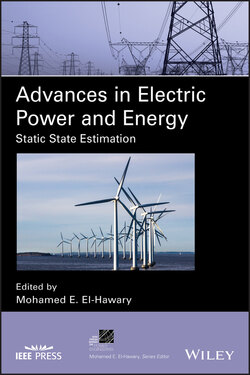Читать книгу Advances in Electric Power and Energy - Группа авторов - Страница 71
2.5.10 Case Study
ОглавлениеIn this section, the performance of the mathematical programming estimation procedures described above is analyzed from both numerical and computational perspectives. These state estimation methods are applied to a realistic 118‐bus system. This system corresponds to the IEEE 118‐bus network, which represents a significant area of the American Electric Power system.
For statistical consistency, each analysis is carried out by considering 100 measurement scenarios. Each measurement scenario is synthetically generated from the solution of a converged power flow by adding Gaussian‐distributed random errors to the corresponding true values.
Each scenario involves:
1 A random active/reactive power consumption level.
2 Random locations of voltage and active/reactive power meters (ensuring observability of the whole system).
3 A random redundancy level.
4 Gaussian‐distributed random errors in all measurements (standard deviations of 0.01 and 0.02 p.u. for voltage and power measurements, respectively).
The computational analysis of this chapter has been performed using MINOS [11] and SBB [31] solvers under GAMS [12, 30] on a Linux‐based server with four processors clocking at 2.9 GHz and 64 GB of RAM.
